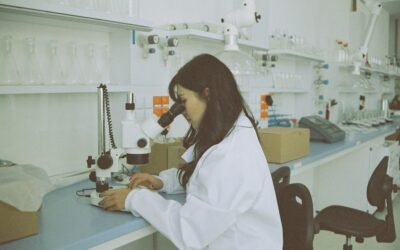Dear Healthy Men: In one of your previous columns, you mentioned that the United States Preventative Services Task Force (USPSTF) recommends against men and boys doing testicular self-exams, Is that still true? Why would anyone suggest that young men shouldn’t examine themselves for early signs of cancer?
A: Actually, things are even worse: the USPSTF actively—and dangerously—discourages self-exams and exams in clinical settings, giving them a D grade, meaning that “[t]here is moderate or high certainty that the service has no net benefit or that the harms outweigh the benefits.” Making matters worse, the US Department of Health and Human Services (HHS) incorporated those ill-conceived recommendations into “Healthy People 2030”, which claims to set “data-driven national objectives to improve health and well-being over the next decade.”
But in truth, those recommendations fly in the face of actual data (and logic), A recent article published in the American Journal of Men’s Health supports “the benefits of regular screening by individuals and their physicians.” The authors urge the USPSTF to adjust the grade to “B,” indicating that “there is high certainty that the net benefit is moderate or there is moderate certainty that the net benefit is moderate to substantial.”
Interestingly, back in 2009, the USPSTF issued a similarly misguided recommendation against routine mammogram screening for breast cancer. But many women’s health organizations and health providers fought back, saying that mammograms save lives and that recommending against them could result in delayed diagnosis and increased mortality. Under pressure, the USPSTF changed course.
The same thing needs to happen with regard to testicular cancer screening. This year, in the U.S. alone, more than 9,700 males will be diagnosed with testicular cancer, according to the American Cancer Society, and 600 will die. And the incidence rate has been steadily increasing. If current recommendations are not resisted, young men will suffer and die unnecessarily.
Healthy Men, Inc., the national nonprofit I co-founded, encourages all males ages 15-35 to regularly perform testicular self-exams, and if they feel a lump or a bump or anything out of the ordinary, to see a doctor immediately. Early symptoms of the disease can be mild, which often causes many to delay seeking medical attention.
The most effective way to reduce the number of deaths from testicular cancer is to educate boys and young men (and those who love them) about the importance of doing regular testicular self-exams and recognizing the symptoms of the disease.
Testicular cancer is relatively rare, accounting for only about one percent of all male cancers. Caucasian males are more likely than African Americans, Asians, and Hispanics to develop the disease. But overall, it’s the most common form of cancer among boys and men between 15 and 35 years old, with an average age at diagnosis of about 33.
Fortunately, testicular cancer, if caught early, has a 99 percent five-year survival rate. Unfortunately, as we’ve discussed in previous columns, men and boys are far less likely than women and girls to have regular contact with a healthcare provider. That makes early diagnosis of testicular cancer—and most other potentially serious health conditions—extremely difficult. As a result, too many cancers aren’t diagnosed until it’s too late, which helps explain why cancer mortality rates for men are notably higher than for women.
Treating testicular cancer typically involves one or more of the following: surgery to remove the cancer, chemotherapy, and radiation treatment. Many young men who get diagnosed with testicular cancer worry that those treatments might make it impossible for them to become dads. Fortunately, that’s not true. Several recent studies suggest that while chemotherapy or radiation may decrease sperm counts during treatment, fertility typically returns within two years.
Sadly, we still don’t understand all of the causes of testicular cancer or whether there are any environmental or behavioral factors that might increase or decrease one’s risk.
So as Testicular Cancer Awareness Month gets underway, I encourage all young men to take their health into their own hands. Literally. If you’re in a relationship, you and your partner can examine each other (women should be doing monthly breast exams). If you or your partner finds something that doesn’t feel right, make an appointment with a healthcare provider. For more information and resources about testicular cancer and other male-specific health issues, visit MyCheckpoints, the Testicular Cancer Awareness Foundation, and the Testicular Cancer Foundation.




